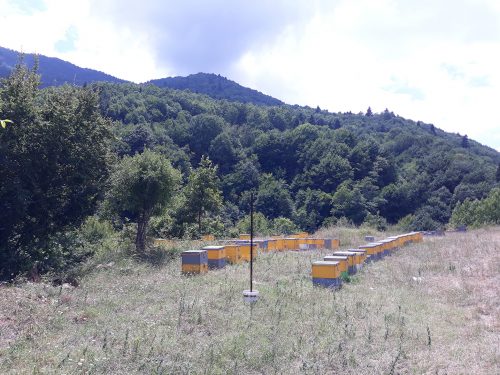The colours of pollen do much the RAINBOW! Different plants, different pollen grains, different colour of pollen and aromas, this is the paradise of bees’ life! But it is not only the beauty in the colours of pollen as you see in this combination picture.

The more colourful your pollen is, the more nutritious it is! and this has been proven many years ago. Of cource there are exceptions and there are some plants that can be very very nutritious alone, as the Rubus sp. for example, but usually mixed pollen is better for the bees health as well as for humans. I suspect that you eat pollen, right? Think that 2 teaspoons of pollen and 1 teaspoon of honey every morning can give you the energy you need for the whole day!
Fani Hatjina






